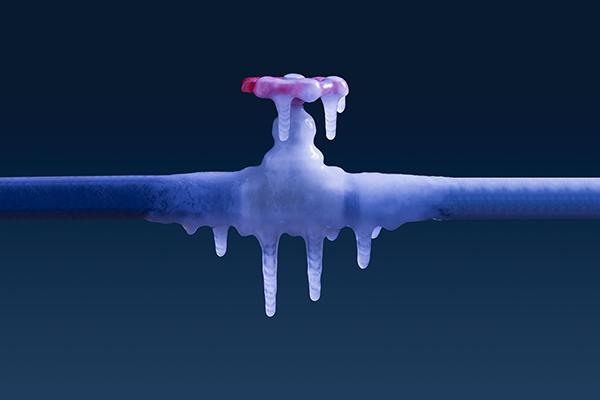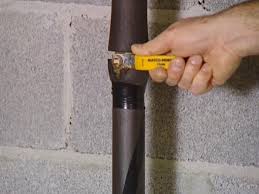Everybody maintains their own individual rationale in relation to Winterizing Your Pipes.

All home owners that live in pleasant environments have to do their finest to winterize their pipelines. Failure to do so can spell calamity like icy, cracked, or burst pipes.
Activate the Faucets
When the temperature declines and it seems as if the freezing temperature will last, it will certainly help to turn on your water both inside your home as well as outdoors. This will keep the water flowing via your plumbing systems. In addition, the activity will certainly decrease the freezing process. Especially, there's no demand to turn it on full blast. You'll wind up throwing away gallons of water in this manner. Rather, go for about 5 declines per min.
Open Up Closet Doors Hiding Plumbing
When it's chilly outside, it would certainly be useful to open up cupboard doors that are masking your pipes. They might be someplace in your kitchen or washroom. This will enable the cozy air from your heating system to flow there. As a result, you protect against these revealed pipelines from freezing. Doing this tiny technique can keep your pipes warm and limit the potentially unsafe outcomes of freezing temperature levels.
Take Some Time to Cover Exposed Piping
One very easy and great hack to warm up cold pipes is to cover them with warm towels. You can likewise utilize pre-soaked towels in warm water, simply do not fail to remember to wear safety gloves to protect your hands from the heat.
Try a Hair Clothes Dryer or Warm Gun
When your pipelines are nearly freezing, your trusty hair dryer or heat weapon is a godsend. If the warm towels do not aid dislodge any kind of settling ice in your pipelines, bowling hot air directly into them might aid. Do not use other objects that generate direct fires like an impact torch. This can lead to a larger calamity that you can not regulate. You may end up harmful your pipes while trying to melt the ice. As well as in the long run, you may also wind up shedding your home. So beware!
When Pipes are Frozen, close Off Water
Shut off the main water shutoff immediately if you observe that your pipes are totally frozen or nearly nearing that stage. You will typically find this in your cellar or utility room near the heater or the front wall surface closest to the street. Transform it off today to prevent more damages.
Don't neglect to shut external water sources, too, such as your connection for the yard home. Doing this will protect against extra water from filling out your plumbing system. With even more water, more ice will certainly pile up, which will eventually lead to rupture pipes. It is best to call a specialist plumber for an evaluation if you are not sure regarding the state of your pipelines this winter season. Taking this proactive technique can save you countless dollars out of commission.
All homeowners who live in temperate climates have to do their ideal to winterize their pipes. Failing to do so can lead to calamity like icy, split, or burst pipes. If the hot towels do not help displace any type of clearing up ice in your pipelines, bowling warm air directly right into them may help. Transform off the main water shutoff promptly if you discover that your pipelines are entirely frozen or virtually nearing that stage. With more water, even more ice will certainly pile up, which will at some point lead to break pipes.
PREVENT YOUR PIPES FROM FREEZING THIS WINTER
A Leading Cause of Property Damage
When the weather is taking a deep nose dive into the cold dreary days, the risk of your pipes freezing and potentially bursting skyrockets. Unfortunately, during these cold dreary months, burst pipes are the most common denominator for property damage. The pipes that are most at the risk are those that are in areas where it is most cold in your home. For instance, pipes located in interior places such as basements, attics, and your garage. Unfortunately, that doesn’t mean that the pipes running through your cabinets or exterior walls can’t freeze. Good news, however, is that you can do things to help prevent pipes from freezing.
How to Prevent Pipes From Freezing
Once the temperature starts to drop during the winter, you should be taking the proper measures needed to ensure that your pipes stay warm and that there is circulation of water through them. Some steps that experts may recommend could go against your better judgement when it comes to saving water and heat. However, it would go without saying that when expenses are compared, damaged pipes could put a bigger dent in your wallet than a water bill.
What Can I Do?
- Keep your garage door closed. This is very important, especially if you have water supply lines running through your garage.
- Open your kitchen and bathroom cabinets to allow warm air to circulate through them.
- Allow air circulation throughout your home. Keeping the interior doors open will once again allow the warm air to circulate inside your home.
- Ensure your thermostat is running the same temperature throughout the night and day.
- If you plan to be away from home during the cold months, set your temperature no lower than 55° F. This should provide enough heat to keep the pipes warm and prevent any remaining water inside the pipes from freezing.
- For more of a long-term solution, add insulation to attics, basement, and other crawl spaces around your home.
- By allowing your faucet to drip, it will alleviate pressure in the system. This is important because the pressure that is created between the blockage and the faucet can potentially cause the pipes to burst. Allowing the faucet to drip will prevent the pressure from building up, therefore keeping the pipes from bursting.
- Seal any cracks, openings, and crawl spaces around your home to prevent cold air from coming inside. This keeps your pipes-not to mention your home-warmer and less susceptible to issues caused by freezing temperatures.
- For the pipes in your home that are easily accessible, applying electrical tape to them might prevent them from freezing over. This is a quick fix, as you can apply the tape directly to the pipe. There are two options for heating tapes. One turns on and off by itself when it senses heat is needed. The other type of heating tape needs to be applied when heat is needed and removed when not necessary. If you have exposed pipes in your home, you can check this website to take a look at a few options that would be available at a shop near you.

As a keen reader on How to Prevent Frozen Pipes, I think sharing that article was mandatory. Make sure you take the opportunity to promote this page if you enjoyed reading it. I truly appreciate reading our article about How to Prevent Frozen Pipes.
Call Today
Comments on “Avoid Pipe Bursts in Cold Weather: 5 Effective Winterizing Hacks”